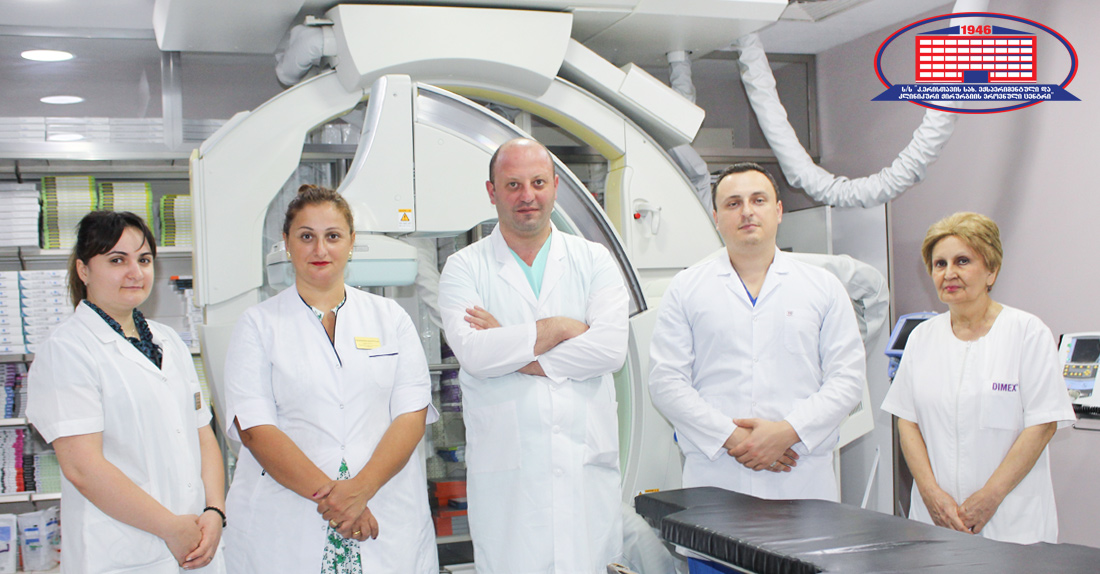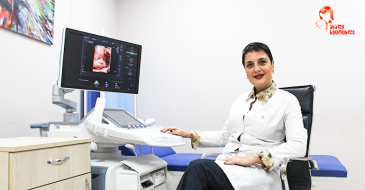
Surviving life of a patient with a rare pathology
In the interview you will learn about:
- Patient’s symptoms;
- Operation process;
- Modern equipment used in the operation;
- Postoperative condition of the patient.
A woman was admitted to the National Center of Surgery by 112 ambulance, who could not express her complaints due to the severity of her condition. As family members explained, the patient was diagnosed with a Stage IV malignant tumor of the lateral surface of the tongue in January 2020, with metastases in the right lymph nodes of the neck and the chin area. A few weeks before entering our clinic, the patient had already undergone oncological surgery and suddenly, on the day of entering the clinic, she started bleeding from her mouth at home. Giorgi Egutidze- Head of the Department of Neurosurgery, is talking about this case:
– With what symptoms did the patient enter the clinic and how difficult was her condition?
–The patient had a tumor in the facial area and metastases in the neck, which led to a partial resection (excision) of the tongue with surgery a few weeks ago. On the day of admission to the clinic, she was found to have active bleeding from her mouth at home, which could not be stopped, and finally, the patient was taken to our clinic and placed in the emergency department. After another unsuccessful attempt to stop the bleeding from the mouth, as she was losing a large amount of blood and openly blocking the blood vessels could have ended in lethality, the decision to interfere endovascularly was made immediately.
–Tell us more precisely, what manipulations were performed during the operation?
–The woman had her entire neck and mouth filled with blood clots, while the bleeding did not stop. During the operation, specifically embolization of the external carotid artery and its branches (blood vessels) was performed with the help of coils. Which eventually affected the outcome, as there was a very high risk that the operation would end in a lethal outcome. Tumor formation was observed in the neck, mouth, and lower jaw. Quite a complex and large-scale operation was performed, a tracheostomy tube and plastic surgery were performed. As for today, we can confidently say that we have saved the patient and she has already returned to her original condition. There was a danger of losing her during the operation as well because the blood was pumped from the main blood vessels of a rather large caliber. Therefore, we also transfused blood to her.
– The patient underwent oncological surgery a few weeks before being brought to the clinic ... Has the reason for the complication of her condition become a postoperative complication ?!
– No, it was not the fault of the postoperative complication. All this was due to her general diagnosis and condition. At least, damage to these blood vessels was caused by cancer. This pathology, due to the location, in addition to damaging the tissues, the blood vessels were also damaged, causing non-stop bleeding!
–As you said, you were able to embolize the blood vessels with the help of a coil ... Explain in detail what this means and what kind of devices you use during the operation?
–The coil is a special spiral, which targets and punctures a specific blood vessel allows us to enter from the leg and eliminate bleeding. Also, the operation was assisted by a two-arm angiograph from the Japanese company SHIMADZU - Trinias B12. This is an exclusive device in the Transcaucasia, by which we carry out unique operations. With the help of an angiograph, as a result of entering one contrast substance, we work in two images, both in the direct and lateral projection. As for the material needed for the operations, the clinic has the largest stock of it, which allows us to perform operations of any complexity. It is noteworthy, that only multi-profile clinics with a team of professional doctors, with the appropriate infrastructure and the help of the latest medical technologies, can perform operations of similar complexity!
– What is the current condition of the patient?
– The woman is already stable at this stage, her dynamic performance is normal and the bleeding has stopped. Has contact, has movement in all four limbs, is conscious, and follows instructions. In short, she has returned to her normal condition, now a lot depends on her body. She will spend about 4-5 more days in the clinic and then she will be discharged.









